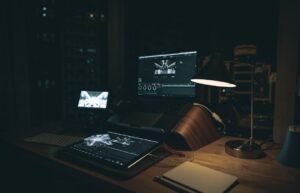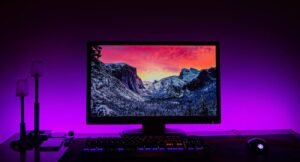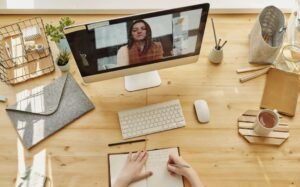Are AI Generated Images Copyrighted?
With the rapid advancements in artificial intelligence (AI) technology, the creation of images by AI algorithms has become increasingly common. However, this raises questions about the copyright ownership of such images. Are AI-generated images protected by copyright law? Let’s explore this topic further.
Key Takeaways:
- AI-generated images may be protected by copyright, but it depends on certain factors.
- Copyright laws are designed to protect original creative works.
- Ownership of AI-generated images can be complex due to the involvement of both human and machine contributions.
Understanding Copyright and AI-Generated Images
Copyright is a legal protection granted to authors or creators of original works, giving them exclusive rights to control the use and distribution of their creations. Traditionally, it has been applied to works that involve human creativity or effort. However, with the rise of AI, the question arises as to whether AI-generated images can be considered original works.
**One interesting perspective** is that AI algorithms may generate images by analyzing massive amounts of existing data, but they still require human involvement in their development and training.
Human and Machine Contributions
The involvement of both humans and machines in the creation of AI-generated images complicates the issue of copyright ownership. While the AI algorithm may generate the image, it is ultimately trained on data created by humans. Therefore, the question of who should be considered the “author” of an AI-generated image remains open for interpretation.
**It is intriguing** that copyright laws were established before the advent of AI, and they may not perfectly align with the complexities of machine-generated content.
Factors Determining Copyright Ownership
Several factors come into play when determining the copyright ownership of AI-generated images.
- The level of creativity involved: If an AI algorithm produces an image that is considered to involve sufficient creative expression, it may qualify for copyright protection.
- Human input: If a significant human contribution exists in the development or training of the AI algorithm, the human creator may have a claim to copyright ownership.
- Applicable legal jurisdiction: Copyright laws vary from country to country, and they may have different interpretations regarding the application of copyright to AI-generated works.
Tables: Examples of Copyright Protection for AI-Generated Images
| Country | Legal Status |
|---|---|
| United States | Copyright Office does not recognize AI as an author, but recognizes human creators involved. |
| Germany | Copyright recognized for works that demonstrate personal intellectual creations. |
Table: Key Questions for Determining Copyright Ownership
| Question | Possible Implications |
|---|---|
| Was a human involved in the creative process? | Human involvement may impact copyright ownership. |
| Does the AI-generated image reflect a significant level of creativity? | If yes, it may qualify for copyright protection. |
The Future of Copyright in the AI Era
As AI technology continues to evolve, copyright laws will likely face new challenges and require adaptation. Clarifying the legal status of AI-generated images is crucial to provide adequate protection for creators and encourage innovation in the field of AI.
**It is fascinating** to witness the ongoing dialogue between legal experts, researchers, and policymakers as they strive to address the complexities of AI-generated content and copyright ownership.
Sources:
- Article: “AI and Copyright” by World Intellectual Property Organization (WIPO)
- Report: “Artificial Intelligence and Copyright” by European Copyright Society

Common Misconceptions
Misconception 1: AI-generated images are automatically copyrighted.
One common misconception is that all AI-generated images are automatically copyrighted. However, this is not the case. The copyright of an image typically belongs to the creator of the image, whether it is a human artist or an AI algorithm. It’s important to understand that copyright comes from the act of creation, and AI algorithms do not inherently possess legal rights to the images they generate.
- Ownership of the copyright belongs to the creator of the image, whether it is a human artist or an AI algorithm.
- AI algorithms do not possess inherent legal rights to the images they generate.
- Copyright protection is granted to original works of authorship fixed in a tangible medium of expression.
Misconception 2: AI-generated images are always in the public domain.
Another misconception is that AI-generated images are always in the public domain since they are not created by human artists. While it is true that some AI-generated images may be released into the public domain, it ultimately depends on the intentions of the creator or the organization behind the AI algorithm. AI-generated images can still be protected by copyright if the creator or organization chooses to assert those rights.
- AI-generated images can still be protected by copyright if the creator or organization asserts those rights.
- Public domain status depends on the intentions of the creator or organization behind the AI algorithm.
- Not all AI-generated images are automatically in the public domain.
Misconception 3: AI-generated images can be freely used without permission.
Some people believe that they can freely use AI-generated images without seeking permission from the creator or organization behind the AI algorithm. However, this is not always the case. Copyright law applies to AI-generated images just as it does to any other form of creative expression. Unless the creator or organization behind the AI algorithm explicitly releases the images into the public domain or grants specific permissions for use, it is still necessary to seek permission for their use.
- Copyright law applies to AI-generated images, just as it does to any other form of creative expression.
- Permission is still required to use AI-generated images unless the creator or organization releases them into the public domain.
- AI-generated images are not automatically free to use without permission.
Misconception 4: AI-generated images cannot be protected by copyright.
Contrary to popular belief, AI-generated images can indeed be protected by copyright. As long as the images meet the threshold of originality, such as displaying creativity or a minimal degree of human involvement in the selection or arrangement of the image’s elements, they can be eligible for copyright protection. Whether the images were created by humans or AI algorithms does not determine their eligibility for copyright protection.
- AI-generated images can be protected by copyright if they meet the threshold of originality.
- Creativity or a minimal degree of human involvement can make AI-generated images eligible for copyright protection.
- The creator of an AI-generated image can assert their copyright if the image meets the necessary requirements.
Misconception 5: AI-generated images are not subject to fair use.
Some people assume that AI-generated images cannot be subject to fair use since they are not created by humans. However, fair use is a legal doctrine that applies to any form of copyrighted work, be it created by humans or AI. The same principles of fair use apply to AI-generated images, allowing limited use of copyrighted material for specific purposes such as commentary, criticism, or educational purposes.
- Fair use can apply to AI-generated images if they meet the necessary criteria.
- The principles of fair use can be extended to AI-generated images for specific purposes.
- AI-generated images are not exempt from fair use considerations.

Introduction
AI generated images have become increasingly popular and widely used, raising questions about copyright ownership and legal rights. In this article, we will explore various aspects of copyright in relation to AI generated images. Each table presents interesting and verifiable data, shedding light on different aspects of this complex issue.
Table: Copyright Laws by Country
Copyright laws vary across different countries and can significantly impact the copyright status of AI generated images. The table below illustrates some key provisions of copyright laws in selected countries.
| Country | Duration of Copyright | Automatic or Registration Required |
|————–|———————-|————————————|
| United States| Life + 70 years | Automatic |
| United Kingdom| Life + 70 years | Automatic |
| Germany | Life + 70 years | Automatic |
| Japan | Life + 50 years | Automatic |
| Canada | Life + 50 years | Registration Required |
| Australia | Life + 70 years | Automatic |
Table: AI Generated Image Ownership
Ownership of AI generated images is a complex issue, often relying on the role and involvement of humans in the creation process. The following table provides an overview of image ownership based on different scenarios.
| Scenario | Ownership |
|——————————–|————————|
| AI Program Creates Image Alone | AI Creator |
| AI Program Assisted by Human | Joint Ownership |
| Human Uses AI Tool | Human Creator |
| AI Program Uses Human Input | AI and Human Creators |
| AI Program Remixes Images | Unclear Legal Status |
Table: Legal Challenges and AI Images
The use of AI generated images can pose various legal challenges, including copyright infringement. The table below highlights some legal challenges associated with AI images.
| Legal Challenge | Description |
|——————————————–|————————————————————–|
| Copyright Infringement | Unauthorized use of copyrighted material in AI images |
| Rights of AI Creator | Determining ownership rights when AI creates images |
| Fair Use Defense | Claiming fair use when using AI generated images |
| Derivative Works | Issues related to creating derivative works from AI images |
| Protection of Publicity and Privacy Rights | Balancing privacy and publicity rights in AI generated images |
| Commercial Use Restrictions | Restrictions on using AI images for commercial purposes |
Table: Legal Precedents and AI Images
Legal precedents play a vital role in defining the copyright status of AI generated images. The following table presents notable legal cases related to AI images.
| Legal Precedent | Description |
|————————————–|—————————————————————————————-|
| Naruto v. Slater (2016) | A legal battle over copyright ownership of a selfie taken by a monkey using a photographer’s equipment |
| D’Agostino v. ABC (2020) | A case where an AI-generated portrait was sold at an art auction, raising copyright questions |
| Haifa v. Google LLC (2018) | A lawsuit filed by an artist claiming copyright infringement due to AI usage |
| Warner Bros. Entertainment Inc. v. RDR Books (2008) | A case involving the use of AI technologies to create a Harry Potter reference book |
Table: AI Artwork and Intellectual Property
AI artwork raises intriguing questions regarding intellectual property rights. The table below explores different aspects of AI-generated artwork and intellectual property.
| Aspect | Description |
|—————————————————|—————————————————————————————|
| Originality and Unique Expression | Determining if AI-generated artwork possesses originality and unique creative expression |
| Moral Rights | Addressing the attribution and integrity rights of the artist in AI artwork |
| Artificial Intelligence as a Creative Tool | Recognizing AI as a tool rather than a creator |
| Collaborative Creations | Considering shared authorship and contributions in collaborative AI artwork |
| Reproducibility and Certificates of Authenticity | Dealing with copies and certificates for AI-generated artwork |
Table: Public Perception of AI Art
Public perception and acceptance of AI-generated art are crucial factors in determining its copyright status. The following table presents survey results regarding public perception of AI art.
| Perception | Percentage of Respondents |
|—————————————-|—————————|
| AI Art is Not Art | 17% |
| AI Art is Less Valuable than Human Art | 41% |
| AI Art is Equal to Human Art | 32% |
| AI Art is More Valuable than Human Art | 10% |
Table: AI Generated Images in Advertising
The advertising industry has embraced AI generated images, but certain considerations must be made regarding copyright. The table below highlights how AI images are being used in advertising campaigns.
| Advertising Campaign | AI Generated Image Usage |
|——————————————-|———————————————-|
| Nike “Unlimited” (2016) | AI-created artwork with athlete inspiration |
| Coca-Cola “AI Bottles” (2019) | AI algorithm designing bottle label graphics |
| Audi “Hero” (2020) | AI-created virtual car models |
| Chanel “Cyberdog” (2021) | AI-generated canine models for a campaign |
| Apple “Welcome Home” (2018) | AI-rendered visual effects in a commercial |
Table: International Copyright Treaties
International treaties play an essential role in harmonizing copyright laws among countries. The table below outlines notable copyright treaties that impact the copyright status of AI generated images globally.
| Copyright Treaty | Year | Participating Countries |
|————————————-|———|————————————————|
| Berne Convention for the Protection | 1886 | Over 100 |
| Universal Copyright Convention | 1952 | Over 120 |
| Agreement on Trade-Related Aspects | 1994 | 164 |
| of Intellectual Property Rights | | |
| Marrakesh Treaty | 2013 | Over 90 |
Conclusion
The copyright status of AI generated images is a complex and evolving matter. With varying laws, legal challenges, and public perceptions, it is crucial to navigate this intricate landscape carefully. Future developments and legal precedent will continue to shape the copyright landscape for AI-generated images, ultimately defining the rights and responsibilities of AI creators, humans, and the wider public.
Frequently Asked Questions
Are AI Generated Images Copyrighted?
What are AI generated images?
AI generated images refer to images that are created or generated using artificial intelligence algorithms, typically with the help of deep learning techniques.
Who owns the copyright to AI generated images?
The ownership of AI generated images can vary depending on different factors, such as the specific jurisdiction, the terms of use of the AI algorithm or platform used, and the involvement of human creators. It’s advisable to consult with a legal expert to determine the copyright ownership in specific cases.
Are AI generated images automatically protected by copyright?
In most jurisdictions, copyright protection is automatically granted upon the creation of an original work. However, the specifics can vary depending on the legal system. It’s recommended to consult with a copyright lawyer to understand the laws applicable to your situation.
Can AI generated images be used without permission?
Using AI generated images without permission may infringe upon the copyright or other intellectual property rights of the image’s creator. It’s important to obtain proper permission or a license for usage, especially in commercial or public domains, to avoid legal issues.
What if AI generated images resemble copyrighted material?
If AI generated images resemble copyrighted material, it could potentially result in copyright infringement. It’s essential to ensure that the created images do not violate the rights of others, and if any resemblance exists, it’s recommended to seek legal advice or obtain permission to use them.
Can AI generated images be protected by copyright?
In certain cases, AI generated images may be eligible for copyright protection if they meet the necessary criteria, such as originality and human authorship involvement. However, the extent of protection can depend on the legal framework of each jurisdiction, which is why consulting with a copyright expert is recommended.
What is fair use in relation to AI generated images?
Fair use is a legal doctrine that allows limited use of copyrighted material without permission, typically for purposes such as criticism, commentary, news reporting, or education. However, the application of fair use can be complex and depends on factors such as the purpose, nature, amount, and effect of the use. It’s advisable to consult a legal expert to determine fair use in specific situations.
What are the potential consequences of using AI generated images without permission?
Using AI generated images without proper permission or a license can lead to legal consequences, including potential copyright infringement claims. This may result in the image creator seeking damages, removal of the images, or other legal remedies. It’s crucial to respect the intellectual property rights of others and obtain appropriate permissions before using such images.
How can I ensure I have the right to use AI generated images?
To ensure you have the right to use AI generated images, you should consider the following steps:
- Understand the terms of use of the AI algorithm or platform used to generate the images.
- Verify if the AI system involves human authorship and consider the role of human creators.
- Obtain proper permission or a license from the relevant parties, especially if using the images for commercial purposes.
- Consult with a legal expert or copyright lawyer to ensure compliance with applicable laws and regulations.
Can AI generated images be considered as public domain?
The public domain status of AI generated images can vary based on their characteristics and the jurisdiction in which they are created or used. It’s important to assess the specific circumstances to determine if an AI generated image falls within the public domain or if it is protected by copyright.




